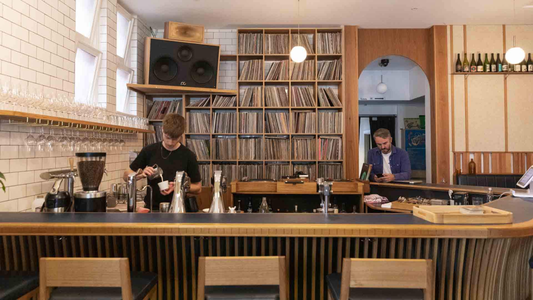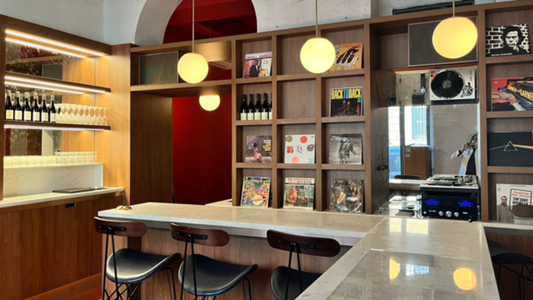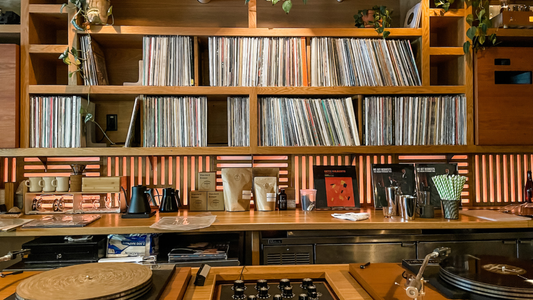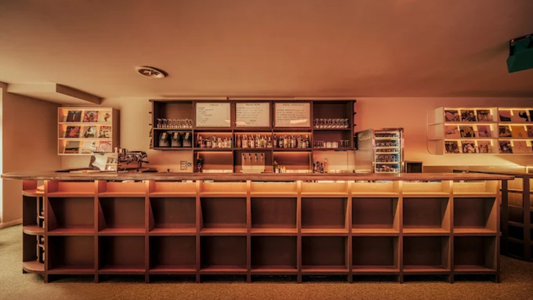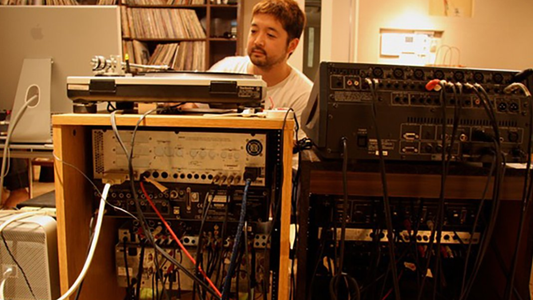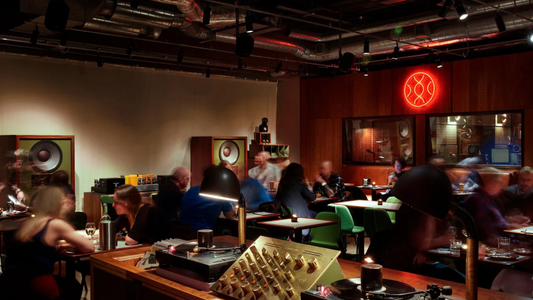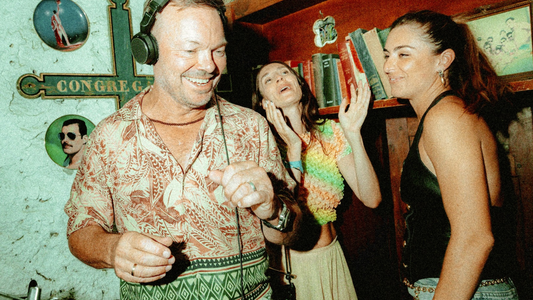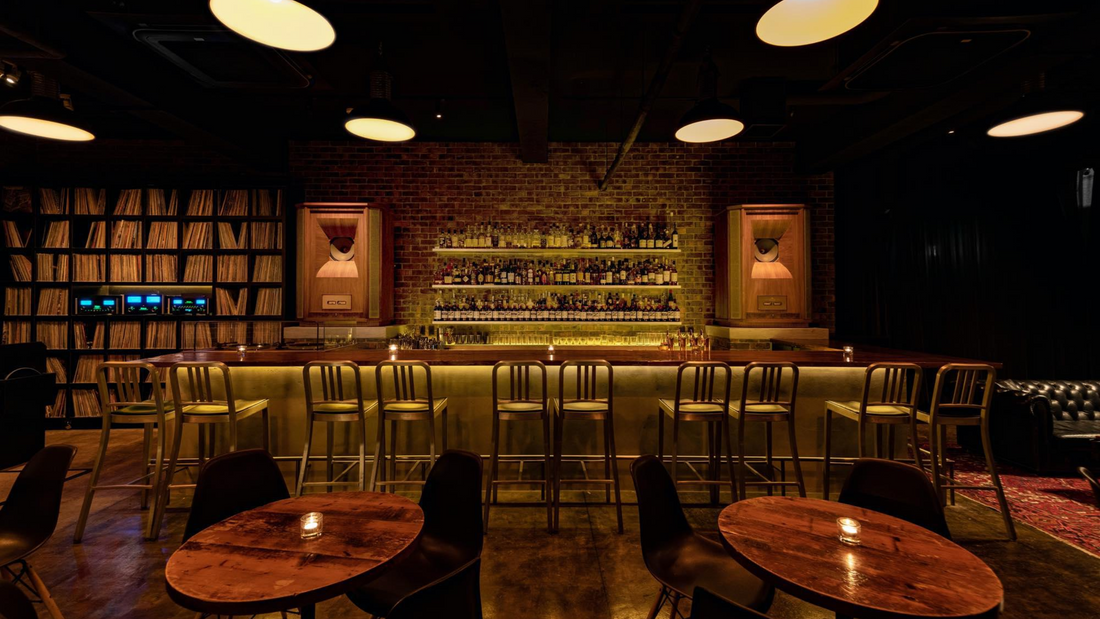
The 50 Best Albums for Deep Listening: A Tracks & Tales Guide
50 Albums for the Art of Listening
A short atlas. A deeper listen. A ritual of presence.
By Rafi Mercer
There are records that play like wallpaper, and there are records that build worlds. The Tracks & Tales Guide is not about hits, rankings, or taste — it is about architecture. Each of these albums changes the geometry of a room. Put them on, and you are somewhere else. This is not a “best of” list. It is a map of listening.
I. The Listening Bar Fundamentals
Where every journey begins — not because they’re obvious, but because they endure.
Miles Davis – Kind of Blue
Silence between notes becomes the stage.
John Coltrane – A Love Supreme
A prayer pressed to wax.
Herbie Hancock – Head Hunters
Electric funk with jazz precision.
Charles Mingus – Mingus Ah Um
Big‑band energy meets painterly rage.
Bill Evans Trio – Sunday at the Village Vanguard
The most intimate of rooms, captured forever.
II. Ambient Sanctuaries
Albums that unfold rather than insist.
Brian Eno – Ambient 1: Music for Airports
Airports reimagined as cathedrals of stillness.
Harold Budd & Brian Eno – The Plateaux of Mirror
A piano inside a fog.
Laraaji – Day of Radiance
Zither transformed into light.
William Basinski – The Disintegration Loops
Decay as beauty.
Stars of the Lid – And Their Refinement of the Decline
The infinite horizon.
III. Japanese Listening Bar Staples
Tone, texture, and breath from Tokyo to Osaka.
Ryuichi Sakamoto – Async
Fractured, luminous, human.
Haruomi Hosono – Cochin Moon
Playful futurism; synthetic warmth.
Midori Takada – Through the Looking Glass
Percussion as landscape.
Hiroshi Yoshimura – Music for Nine Postcards
Minimalist weather sketches.
Yasuaki Shimizu – Kakashi
Saxophone in conversation with silence.
IV. The Electronic Rooms
Light, bass, and repetition as ritual.
Kraftwerk – Trans‑Europe Express
Trains reimagined as sequencers.
Aphex Twin – Selected Ambient Works 85–92
Dancefloor and dreamscape intertwined.
Burial – Untrue
Rain on concrete; bassline memories.
Boards of Canada – Music Has the Right to Children
Analogue childhood haze.
The Orb – Adventures Beyond the Ultraworld
Cosmic dub; a rave cathedral.
V. Dub Chambers
Low end as architecture.
Lee “Scratch” Perry – Super Ape
Psychedelia through bass and smoke.
King Tubby – Dub From the Roots
Echo as instrument.
Scientist – Rids the World of the Evil Curse of the Vampires
Cartooned yet deadly serious.
Augustus Pablo – East of the River Nile
Melodica as sacred chant.
Mad Professor – Dub Me Crazy!!
The lab as playground.
VI. Soul & Sacred Voices
Records that testify.
Marvin Gaye – What’s Going On
Conversation with a broken world.
Stevie Wonder – Innervisions
Visionary and urgent.
Nina Simone – Pastel Blues
Raw and unflinching.
Alice Coltrane – Journey in Satchidananda
A harp becomes a vessel.
Pharoah Sanders – Karma
One chant, eternal ascent.
VII. European Modernism
Minimalism meets grandeur.
Nils Frahm – Spaces
Concert halls turned to memory.
Max Richter – Sleep
Eight hours as one composition.
Jóhann Jóhannsson – IBM 1401, A User’s Manual
Elegy for a machine.
Murcof – Martes
Electronic minimalism with classical weight.
Pantha du Prince – Black Noise
Alpine, crystalline techno.
VIII. Rock & Reverie
Guitars as myth and atmosphere.
The Velvet Underground & Nico – The Velvet Underground & Nico
Noise as art.
Pink Floyd – Wish You Were Here
Absence as theme.
David Bowie – Low
Berlin in fragments.
Talk Talk – Spirit of Eden
Silence weaponised.
Radiohead – Kid A
A band dissolving into signal.
IX. Global Currents
Rooms connected across continents.
Fela Kuti – Expensive Shit
Polyrhythmic fire.
Mulatu Astatke – Ethiopian Jazz Volume 4
Nighttime in Addis.
Caetano Veloso – Transa
Tropicália in exile.
Jorge Ben – África Brasil
Electric samba.
Tinariwen – The Radio Tisdas Sessions
Desert wind in the strings.
X. The Modern Rituals
Already shaping tomorrow’s listening bars.
Floating Points, Pharoah Sanders & LSO – Promises
A single vast piece.
Kamasi Washington – The Epic
Jazz as symphony.
Kieran Hebden & Steve Reid – Tongues
Improvised pulse.
Julianna Barwick – Nepenthe
Vocal layers as cathedral.
DJ Sprinkles – Midtown 120 Blues
House as diary and politics.
This isn’t a definitive list. It’s a map of atmospheres — the records that make sense of the spaces Rafi walks into: bars where silence is sacred, rooms tuned like instruments, nights where a record is not entertainment but environment. These 50 albums are sonic architecture for living.
Rafi Mercer writes about the spaces where music matters. For more stories from Tracks & Tales, subscribe, or click here to read more.
